Two-minute review
The Vivo X80 Pro is another entry into the growing roster of super-premium, super-pricey Android phones offering top camera tech and powerful internals. It’s Vivo’s first member of this premium tier that’s gone on sale globally, instead of just in the company’s home region of China, and like many other phones from many other companies, it’s vying to knock the Samsung Galaxy S22 Ultra off top spot on our list of the best smartphones.
However, like ZTE which recently launched its premium Axon 40 Ultra, Vivo has seemingly forgotten one key thing in launching a super-expensive Android powerhouse to rival the S22 Ultra – that it isn’t Samsung.
Samsung can get away with launching Ultra phones at an eye-watering price because it’s the biggest smartphone seller in the world. People trust the Galaxy branding, and they’re comfortable giving this well-established company huge amounts of money.
The same can’t be said for Vivo which, despite being big in China, barely has a presence in Europe.
The X80 Pro is, by all accounts, a decent phone. It has a premium design, with a curved-edge screen that sits snug in the hand, and a giant camera bump that just screams ‘I’m a camera phone’ (a message reinforced by the multiple Zeiss logos across the back).
It ticks all the boxes of a top-end phone: it has a powerful processor, a good-looking screen, fast charging and a selection of high-res cameras on the back. But while it matches lots of other high-end phones in most departments, it doesn’t do anything to get ahead.
A good example is in the camera department because while the phone has the same combination as the Galaxy S22 Ultra – a main, ultra-wide, telephoto (for portrait shots) and periscope (for zoom shots) – the resulting pictures just aren’t as good. The periscope lens is paired with a sensor that’s too low-res, and the phone’s AI image optimization doesn’t pull its weight.
Another example is in the software. While Vivo’s FunTouch feels like stock Android did for many years, it’s missing the new features and design changes that Android 12 brought (and it has lots of bloatware packed in, which isn’t great).
In theory, the Vivo X80 Pro is a fine phone, but there are far more enticing options on the market. So unless you’ve got some aversion to the Samsung Galaxy S22 Ultra, iPhone 14 Pro Max, Sony Xperia 1 IV and others, we can’t see many people picking the Vivo X80 Pro over its rivals.
Vivo X80 Pro price and availability
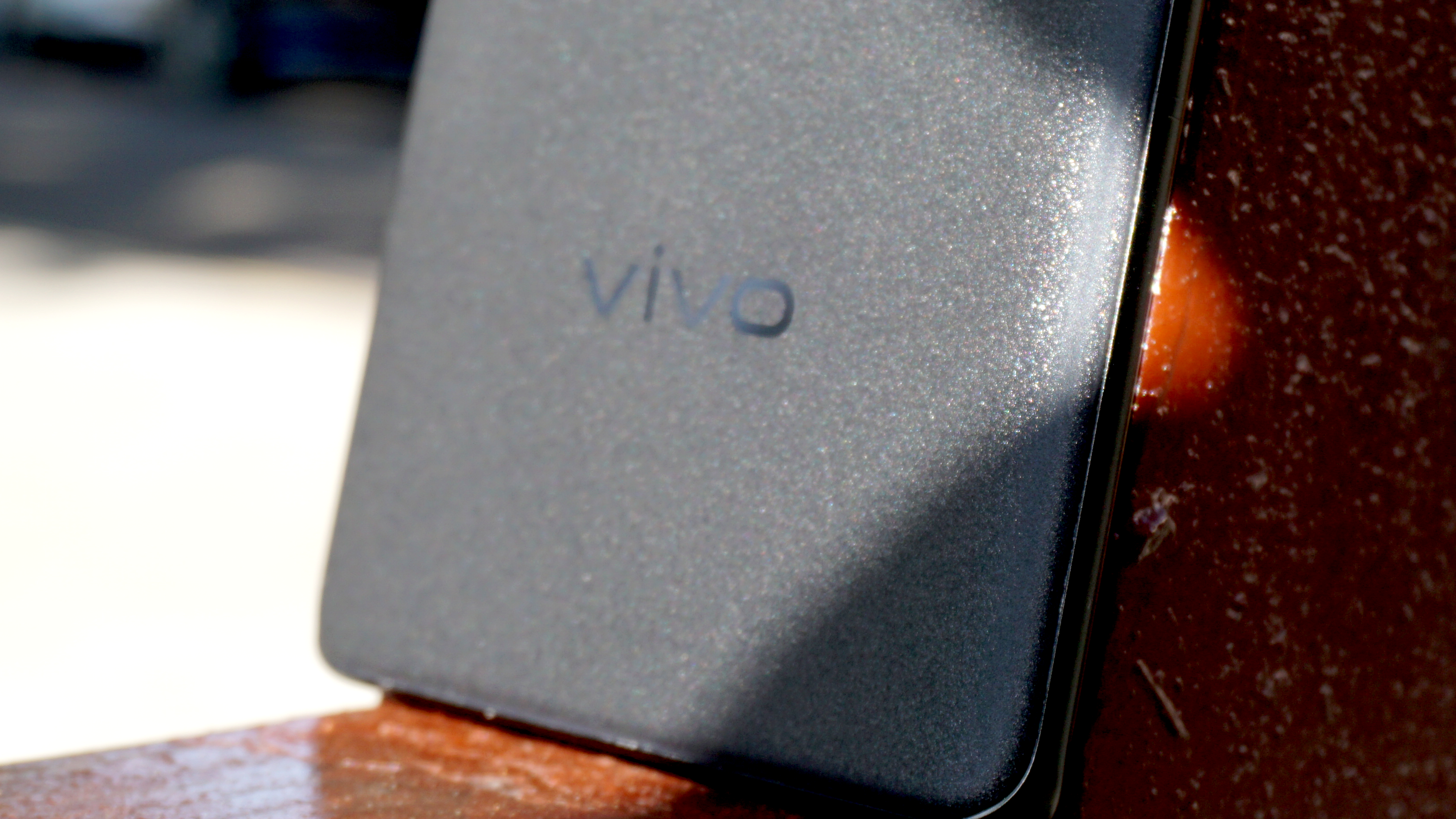
The Vivo X80 Pro costs £1,199 in the UK – that converts to $1,440 or AU$2,090 – and there’s only one storage version going on sale, with 12GB RAM and 256GB storage.
Vivo doesn’t sell its phones in the US, so don’t expect a launch there, but it certainly could come to Australia in the near future.
At that price, the Vivo is a close rival to the Samsung Galaxy S22 Ultra, which starts at $1,199.99 / £1,149 / AU$1,849 (though that’s for 8GB RAM and 128GB storage, for the same 256GB configuration you’re looking at $1,299,99 / £1,249 / AU$1,999)
So if you just want to get the hardware for as cheap as possible, the Samsung is technically more expensive in the one region we can compare pricing as like-for-like storage puts Vivo ahead. It’s a close margin though – speaking generally, these phones are certainly in the same price bracket.
Vivo X80 Pro design
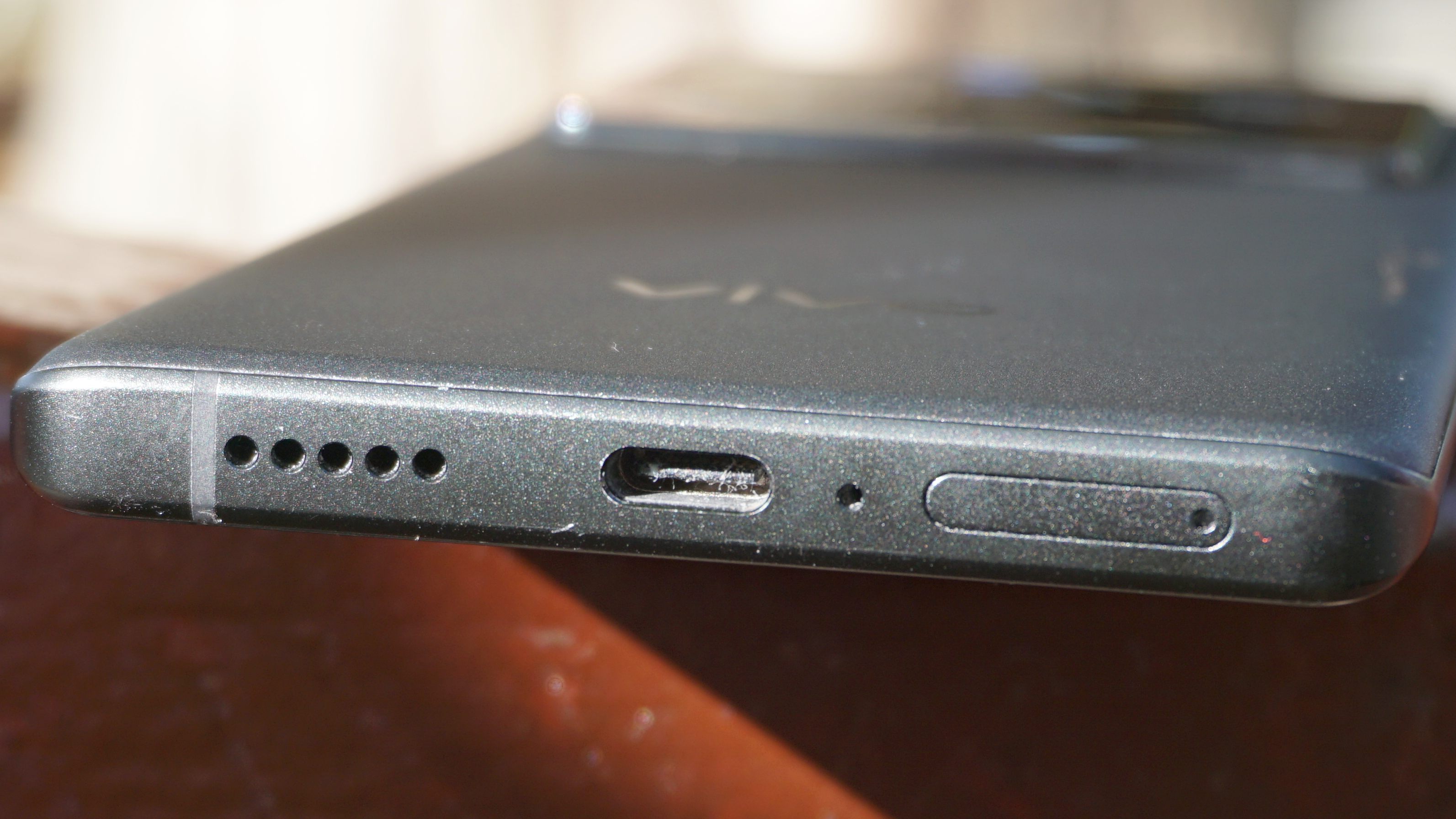
The Vivo X80 Pro is a big phone – it’s not one for the faint of heart or small of hand.
It measures 164.6 x 75.3 x 9.1mm and weighs 215g, so it’s hefty, but if you were expecting anything else at this price then we’re sorry about this wake-up call.
Despite the size, the curved-edge display makes it fairly comfortable to hold in the hand – that is, until you start stretching for the buttons at the side. The power button on the right edge is just about within reach for people with medium-sized hands but the volume rocker above that will require some hand work.
At least the fingerprint scanner is placed within the display, so that’s within reach. There’s a USB-C port but no 3.5mm headphone jack – that’s not a surprise given how few premium phones have the audio feature these days.
The back is dominated by an absolutely huge camera bump – huge in terms of width, not thickness. It houses all four lenses and the flash and is bedecked in logos. We’re not kidding, it says ‘Zeiss’ no fewer than three times. We wonder which camera brand collaborated with Vivo here…
A big camera bump often makes phones shaky when they’re lying flat on a surface, but because of its sheer size, that’s not an issue here.
The rear of the phone – well, the parts not taken up by that mountain range of a camera bump – is made of a lightly-textured glass, which feels quite comfortable in the hand. There are versions of the phone with ceramic or faux-leather claddings, but they’re sadly not going on sale globally.
Vivo X80 Pro display
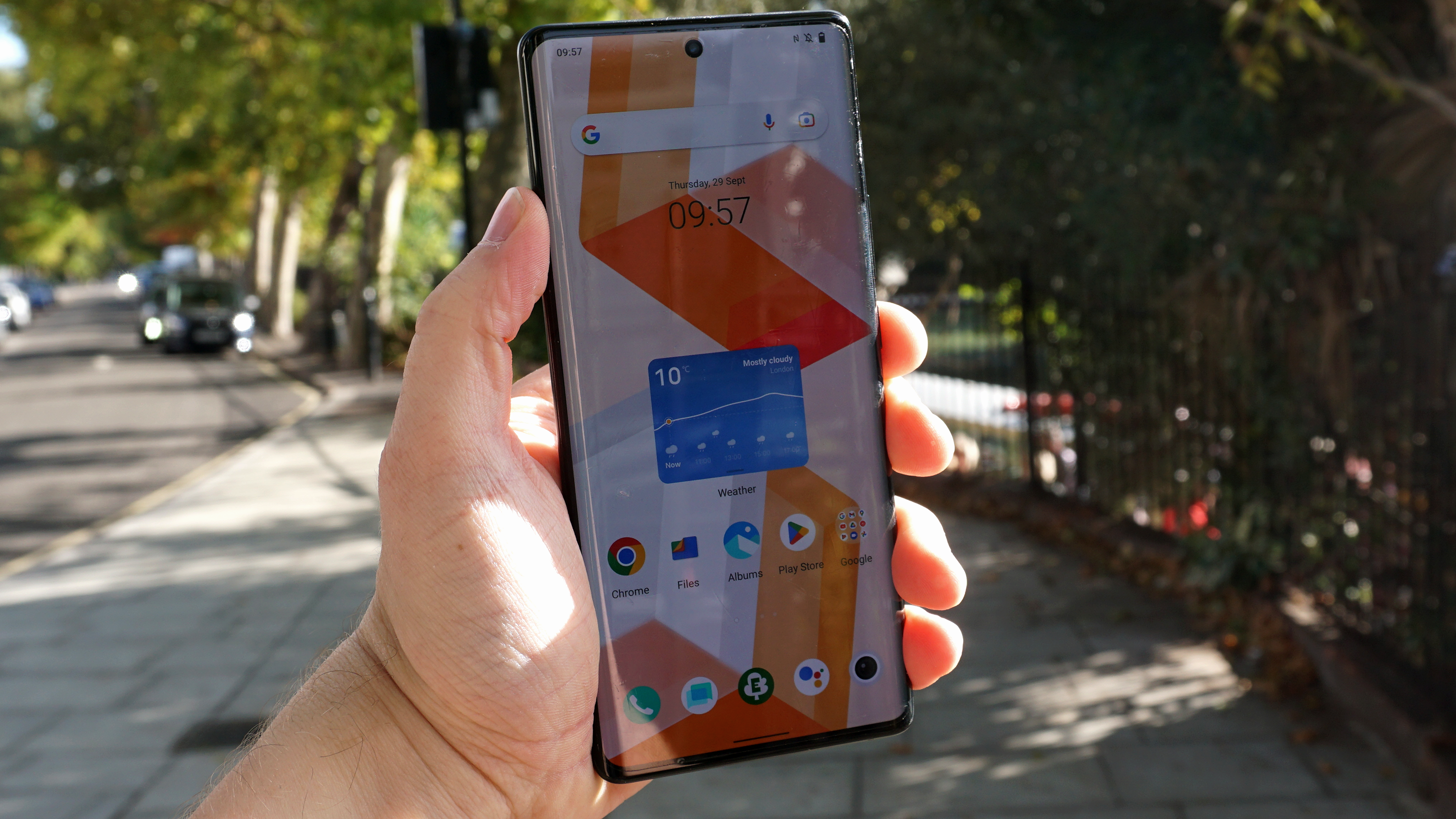
The Vivo X80 Pro’s screen isn’t just big, it’s featured-packed too.
The panel has a resolution of 1440 x 3200 and is joined by a 120Hz refresh rate, LTPO 3 for smoothly varying refresh rates, and support for HDR10+. What does this all mean? Well, it means Vivo has turned it up to 11 in every department of the display.
This is one of the best screens you can get on a smartphone with high max brightness, good contrast and vibrant colors.
Some may be put off by the curved edges of the display, but they slope gently, and we never had any accidental-press concerns with it.
The punch-hole cut-out for the front camera is rather small too, so it won’t eat up much of the viewing area.
Vivo X80 Pro cameras
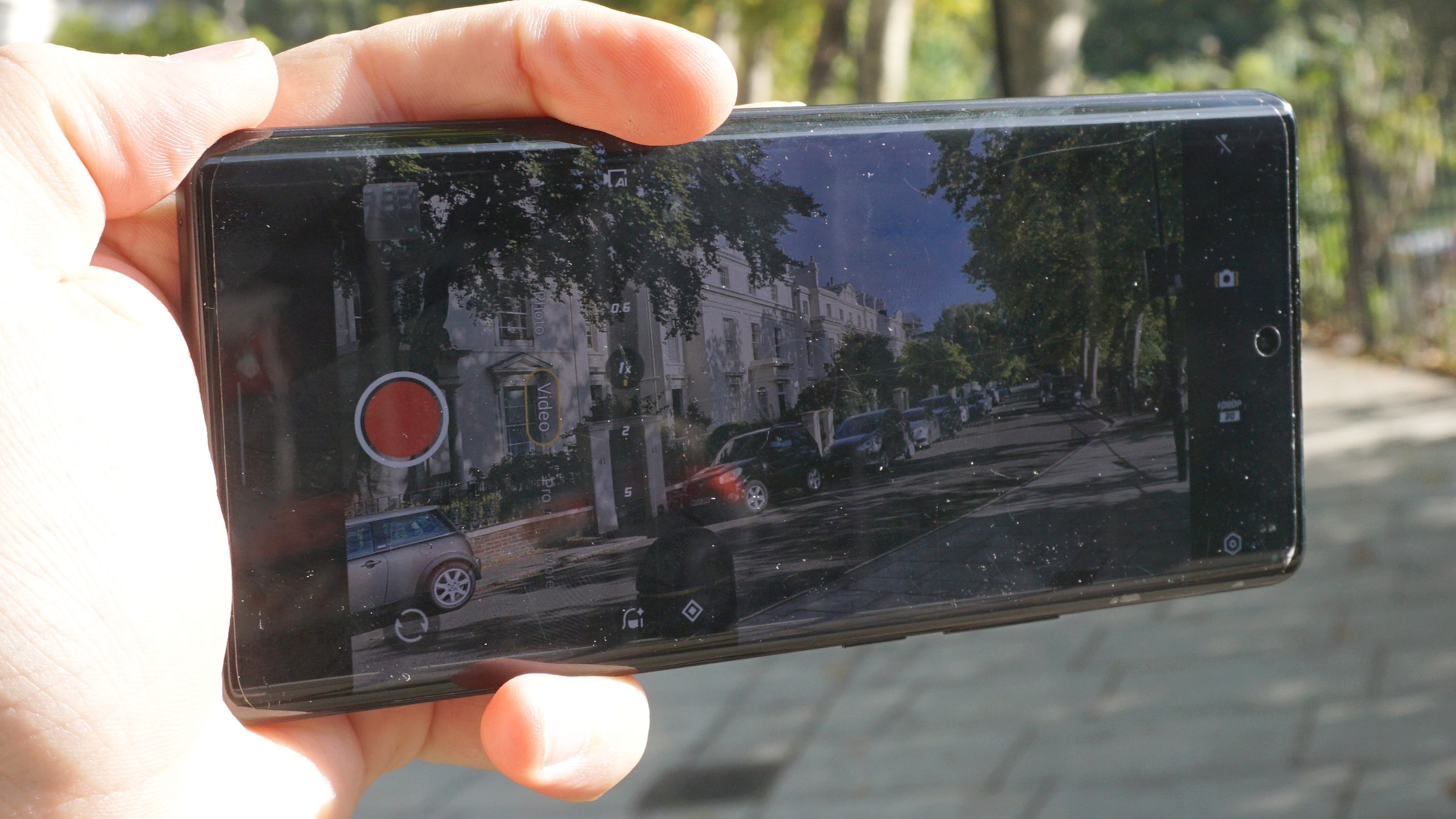
The photography department is clearly where Vivo is focusing with the X80 Pro – if the marketing didn’t give that way, the camera bump plastered in Zeiss logos certainly did.
There are four rear cameras here: there’s a main 50MP f/1.6 snapper joined by a 48MP f/2.2 ultra-wide, 12MP f/1.9 telephoto (with 2x optical zoom, for portrait shots) and 8MP periscope (with 5x optical zoom). Oh, and there’s a 32MP f/2.5 front-facing camera bringing the grand total up to five.
It feels like Vivo is trying to copy Samsung without understanding why the Galaxy S22 Ultra is so good for photography, and that’s most evident in the zoom.
While 5x optical zoom is nothing to turn your nose up at, the 8MP sensor that accompanies this long-distance range is just too low-res to take truly great-looking photos. Snaps are a little grainy and dull. A bump up to 10MP like Samsung could have paid off, though a better sensor would be the optimal choice.
Having a separate camera for portrait shots is another trick taken from Samsung, though in fairness other companies used it first. At least these pictures are good, with the zoom lens creating a more natural depth of field, and the sensor (and AI tweakery) making snaps look fairly bright.
In all fairness, the Vivo X80 Pro is good for ‘standard’ pictures, when you just point the phone at something and press the shutter button. The word ‘good’ is a deliberate choice, as the phone doesn’t always reach ‘great’, especially with some light-touch AI that could be working a touch harder.
The front-facing camera occasionally worked well, but it suffered from the same issue as the rear cameras, in that the AI optimization didn’t seem to be pulling its weight. Selfies seemed dimmer and less colorful than on rival phones.
There are a few extra modes here like Astro (for astrophotography), Supermoon (also for astrophotography), Long Exposure (um… also for astrophotography?) and Night (probably not for astrophotography, right?). Of course, there are the usuals like slow-motion video, document scanning and Pro mode, too.
Camera samples
Vivo X80 Pro performance and specs
The Vivo X80 Pro has the Snapdragon 8 Gen 1 chipset, which was the best Android processor available at the time of its launch – we also saw it in the OnePlus 10 Pro, Xiaomi 12 and the Samsung Galaxy S22 in some regions.
This chip provides loads of power for intensive processes – we could always turn on the advanced graphics or framerate options thanks to the power, making gaming a blast.
This Snapdragon model does have an issue, and it’s something we found in the Vivo – it can get hot under pressure, so a few rounds of an online game or a burst of fast charging means it’ll warm up to a worrying degree. However, we’ve seen it get even hotter on other phones.
While the phone is available in three different configurations around the world: there’s an 8GB RAM and 256GB joined by a 12/256GB and 12/512GB option, only the middle one is available to buy in the UK, so you’ll have to be content with this mix of power and space.
Vivo X80 Pro software
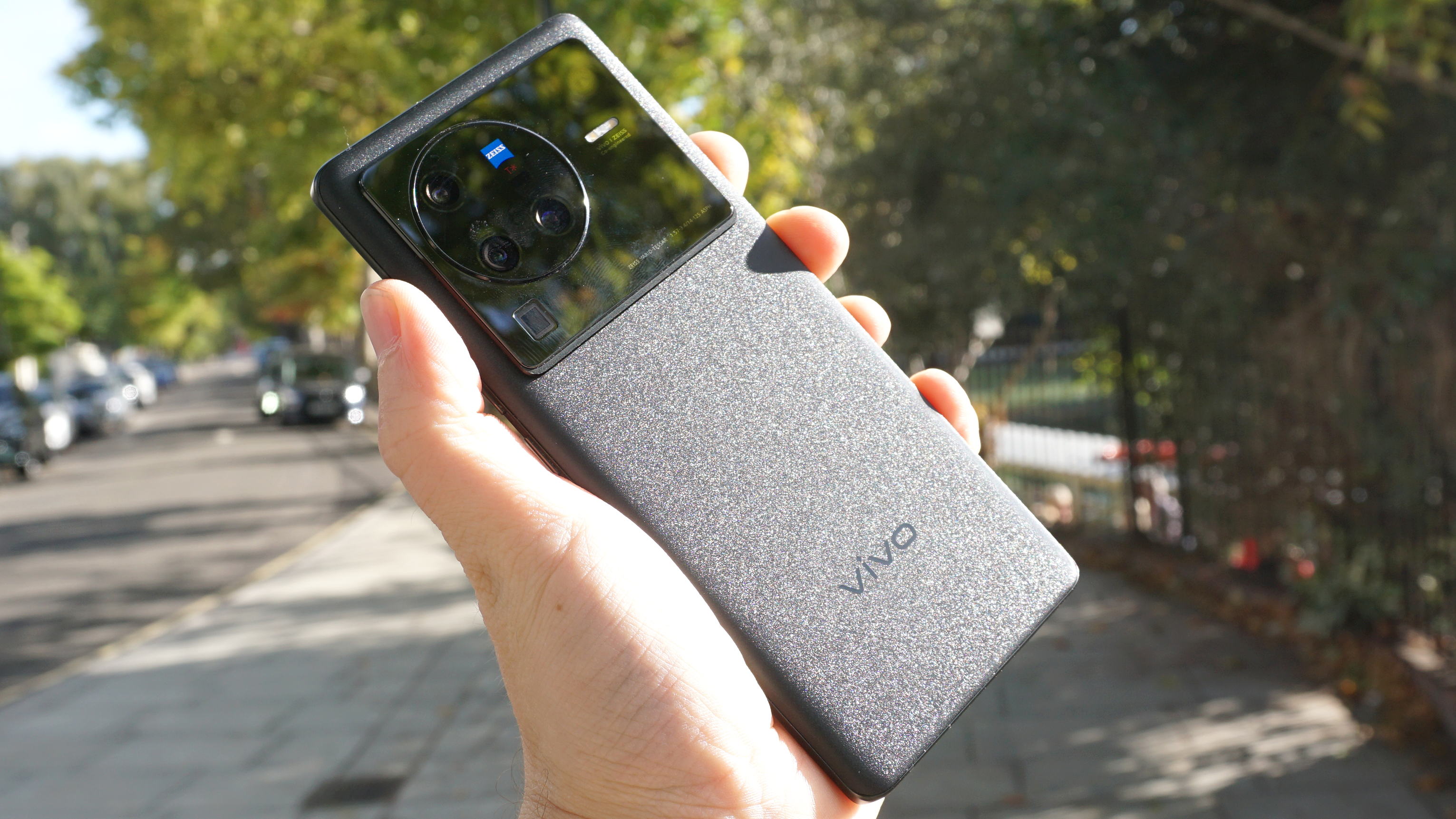
The Vivo X80 Pro uses Android 12, with Vivo’s user interface FunTouch laid over the top.
FunTouch is one of the cleaner Android forks we’ve seen with smallish app icons, simple menu designs and an app drawer to hide most apps in. The design is surprisingly similar to Android, at least pre-Android-12 builds before the user interface saw a big redesign.
One issue is that there are lots of pre-installed apps – or bloatware, to give it its colloquial name – and we kept getting random notifications from apps like the V-Appstore. For an otherwise enjoyable software experience, this left a sour taste.
Vivo X80 Pro battery life

With a 4,700mAh battery, the Vivo’s power back seems a little smaller than its rivals, which all wear 5,000mAh power packs on their sleeves. In practice, this didn’t seem to make a huge difference though.
That’s not to say the Vivo X80 Pro has a great battery life, it’s just not bad. The phone will last for a day of use unless you really push it with hours of gaming or video recording.
Charging is fast at 80W. Vivo says the phone will power from empty to full in 38 minutes, and we’d concur, with the phone reliably fully charging in under 40 minutes (unless, of course, we were using it in this time).
There’s also wireless charging at 50W if you have a compatible charger, which is pretty fast compared to lots of other wireless-powering devices.
Vivo X80 Pro score card
| Attributes | Notes | Rating |
|---|---|---|
| Design | The X80 Pro has a premium-feeling design, though it will be too big for some. | 4/5 |
| Display | The Vivo X80 Pro has a great-looking display, something its size helps with. | 4.5/5 |
| Performance | This phone is certainly powerful, though under pressure it does get hot. | 4/5 |
| Camera | The Vivo has good cameras, as you’d hope for the price, but it loses points on the zoom front. | 4/5 |
| Battery | Super-snappy charging makes up for a decidedly ‘fine’ battery life. | 3.5/5 |
| Software | Bloatware distracts from an otherwise clean and easy-to-use software. | 4/5 |
| Value | The Vivo X80 Pro doesn’t offer much value for money, and isn’t competitive with other top-end phones. | 2.5/5 |





